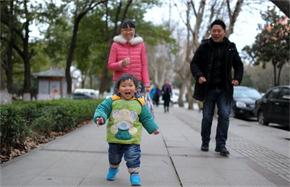Worrying demographic changes
Attention should be paid to the changing structure of the working-age population, the majority of whom are currently the only child of their families. Many of these children were brought up indulgently and thus become self-centered, hardly accept different opinions, advice and criticism. Some of them are afraid of dealing with others, or dislike cooperation, and sometimes they are unrealistically ambitious.
Three aspects of the demographic changes need to be dealt with: the labor shortage related to the decreasing increment of labor supply; the shortage of technicians attributable to the unbalanced structure of the working population, the government needs to pay special attention to the training of skilled personnel; and the tough employment market for university graduates, which indicates that higher education doesn't match the needs of market.
It's now increasingly clear that the family planning policy has not only reduced the working-age population and restrained the pace of sustainable economic growth, it is also partly responsible for young laborers' poor teamwork and production capabilities. The policy has caused great demographic risk and debt, and will lead to worse prospects if the situation remains unchanged.
Maintaining a low birthrate has become China's policy since 2000, yet this measure is still number-based, rather than human-centered, and has not addressed the changing demographic structure since the country entered into a low birthrate period.
According to statistics from the Sixth National Census, the total fertility rate of women of childbearing age was 1.5 or even 1.3, and a super-low birthrate trap is emerging. In other words, the problem of overpopulation has been changing into a problem of an unbalanced population structure.
It's worrying that the situation hasn't drawn more attention. Under the existing population policy, the population decline is likely to be exacerbated in the future. It's time for China to seriously think about a moderate and optimized fertility, as the base line for sustainable population development, as well as a countermeasure to possible population risks.
The author is a professor of demography at Peking University.
(China Daily 01/28/2013 page9)




















